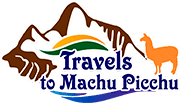FAQs
Frequently Asked Questions about Peru
Where is Peru located?
Peru is located on the western coast of South America, bordered to the north by Ecuador and Colombia, to the east by Brazil and Bolivia, to the south by Chile, and to the west by the Pacific Ocean. Its territory spans three main regions: the arid coastal desert, the Andean highlands, and the Amazon rainforest, making it a unique tourism destination in Peru with landscapes as diverse as they are attractive.
What is the currency and payment methods in Peru?
The official currency is the sol (PEN). In major cities and tourist areas, international credit and debit cards (Visa, MasterCard) are widely accepted. However, it’s advisable to carry some cash in soles for small purchases, tips, or services in rural areas where card terminals may not be available.
What is the climate like in Peru and when is the best time to travel?
The climate varies by region: on the coast there is a desert climate with mild winters and temperate summers; in the Andes there are dry seasons (May–September) and rainy seasons (November–March), with cool or cold nights; in the Amazon high temperatures and humidity persist year‑round. For activities in the Andean region, such as tours in Cusco and Machu Picchu, the best time to visit is the dry season, from May to September, when trails are in optimal condition.
What typical dishes should I try in Peru?
Peruvian cuisine is very varied. Must‑try dishes include ceviche, lomo saltado, ají de gallina, causa limeña, and rocoto relleno. Don’t forget to pair them with a chicha morada or a pisco sour.
What documents do I need to travel to Peru?
Most visitors can enter Peru as tourists without a visa for periods ranging from 30 to 183 days, depending on their country of origin. You must have a valid passport with at least six months of validity remaining from your return date. It’s also useful to carry printed or digital copies of your booking confirmations and your agency’s contact details to expedite any procedures.
What is one of the best tourist destinations to visit in Peru?
Machu Picchu is often considered the country’s star attraction: this ancient Inca city, a UNESCO World Heritage Site, offers breathtaking views and a unique archaeological legacy. Other must‑see places include the Colca Canyon (Arequipa) to observe condors, the Nazca Lines, the beaches and huacas of the North Coast, and the Peruvian Amazon, home to exceptional biodiversity.
What is the safety and healthcare system like for tourists in Peru?
In tourist areas you’ll find good‑quality private clinics and hospitals. The Tourist Police provides assistance in places like Cusco and Lima. Even so, it’s recommended to purchase travel insurance that covers medical emergencies.
Frequently Asked Questions about Cusco
How do I get from Cusco to Machu Picchu?
You can take the train from Poroy or Ollantaytambo stations to Aguas Calientes, then a 25‑minute bus ride to the entrance of Machu Picchu. If you prefer adventure, there are guided trekking options: the 4‑day Inca Trail, the Salkantay Trek, or lesser‑known routes. Book in advance to secure your train seat or trail permit.
How can I prevent altitude sickness in Cusco?
Cusco sits at about 3,400 m (11,155 ft) above sea level, where lower oxygen pressure can cause altitude sickness. To minimize symptoms, acclimatize for 24 hours with light activities, stay well hydrated, eat easily digestible, carbohydrate‑rich meals, avoid alcohol and excessive caffeine, and try traditional coca tea. If needed, consult your doctor about preventive medications such as acetazolamide.
What traditional festivals are celebrated in Cusco?
Highlights include Inti Raymi (June 24), the Inca Festival of the Sun; the Señor de los Temblores Procession (October); and Corpus Christi (June), featuring colorful flower carpets and vibrant processions. Each festival showcases the rich fusion of Andean and Catholic traditions.
What are the best tourist attractions in Cusco and its surroundings?
In addition to the legendary Machu Picchu, visit Sacsayhuamán, Qorikancha, and the Cusco Cathedral in the city. In the Sacred Valley you’ll find Pisac, Ollantaytambo, Moray, and the Maras salt mines. For trekking enthusiasts, Humantay Lake and various Inca Trail sections offer unforgettable experiences. The Rainbow Mountain (Vinicunca) showcases unique multicolored geological formations.
How do I get around within the city of Cusco?
For short trips, use authorized taxis or moto‑taxis in the historic center—ride‑hailing apps are available too. For excursions outside the city, shared vans or tourist minibuses depart from the Plaza de Armas.
What cultural activities can I enjoy in Cusco?
Beyond visiting churches and museums, you can attend Andean dance performances, participate in traditional weaving workshops, sample local cuisine in tasting sessions, and join Pachamama (Mother Earth) offering ceremonies for an authentic Andean worldview experience.
Frequently Asked Questions about Bookings and the Terms of Our Services
What services are included in my reservation with Travels to Machu Picchu?
Your contract covers only the ground services detailed in your booking confirmation: guided tours, transfers, accommodation, and specified activities. International or domestic flights, meals not mentioned, personal travel insurance, and additional personal expenses are not included unless otherwise stated in your itinerary.
How do I formalize my reservation and what are the payment deadlines?
To secure your spot, complete the reservation form and pay a deposit of 30% of the total. The remaining 70% must be paid at least 15 days before your arrival. Once we receive your deposit, we will send you written confirmation. If the final payment is not made by the deadline, your reservation may be automatically canceled without a refund.
Can I modify my reservation and what costs are involved?
You may request changes up to 30 days before the service starts for an administrative fee of USD 50 per person. Any modification requested after that period will be considered a cancellation, and the penalties outlined in our cancellation policy will apply.
What is the agency’s cancellation policy?
- More than 30 days before: 20% penalty of the total.
- Between 29 and 8 days before: 50% penalty.
- Within 7 days prior or No‑Show: 100% penalty.
Non‑refundable airline tickets will remain in your name and may be reused within 12 months, subject to airline penalties and fare adjustments.
Do you require travel insurance and what does it cover?
We recommend purchasing insurance that includes medical coverage, accident protection, repatriation, evacuation, trip cancellation, and interruption. We may request a copy of your policy before services begin. If coverage is insufficient, we reserve the right to deny service. Travelers opting to travel uninsured must sign a liability waiver.
What should I do in case of complaints or incidents during the trip?
Report any issues immediately to your local representative so we can resolve them on the spot. Failing to report during your trip will forfeit the possibility of a post‑trip claim. For post‑service complaints, contact us within 28 days after your return.
What obligations do I have as a client during the tour?
You must follow our guides’ instructions, carry valid passport and documents (visas, vaccination certificates) with at least six months’ validity beyond your return date, and behave in a manner that does not endanger yourself or the group.
Are there special rates for minors?
Children up to 11 years receive a child rate; from 12 years onward, they are considered adults. Unaccompanied minors require additional documentation and, in some cases, notarized authorization.
What happens if my flight is delayed or canceled?
We are not responsible for airline delays or cancellations. We will do our best to accommodate you on the next available departure, subject to availability and airline policies, but cannot guarantee original schedules.
How do last‑minute bookings work?
For reservations made with less than 10 days’ notice, a supplemental fee of USD 50 per booking is applied to cover urgent arrangements with our suppliers.






